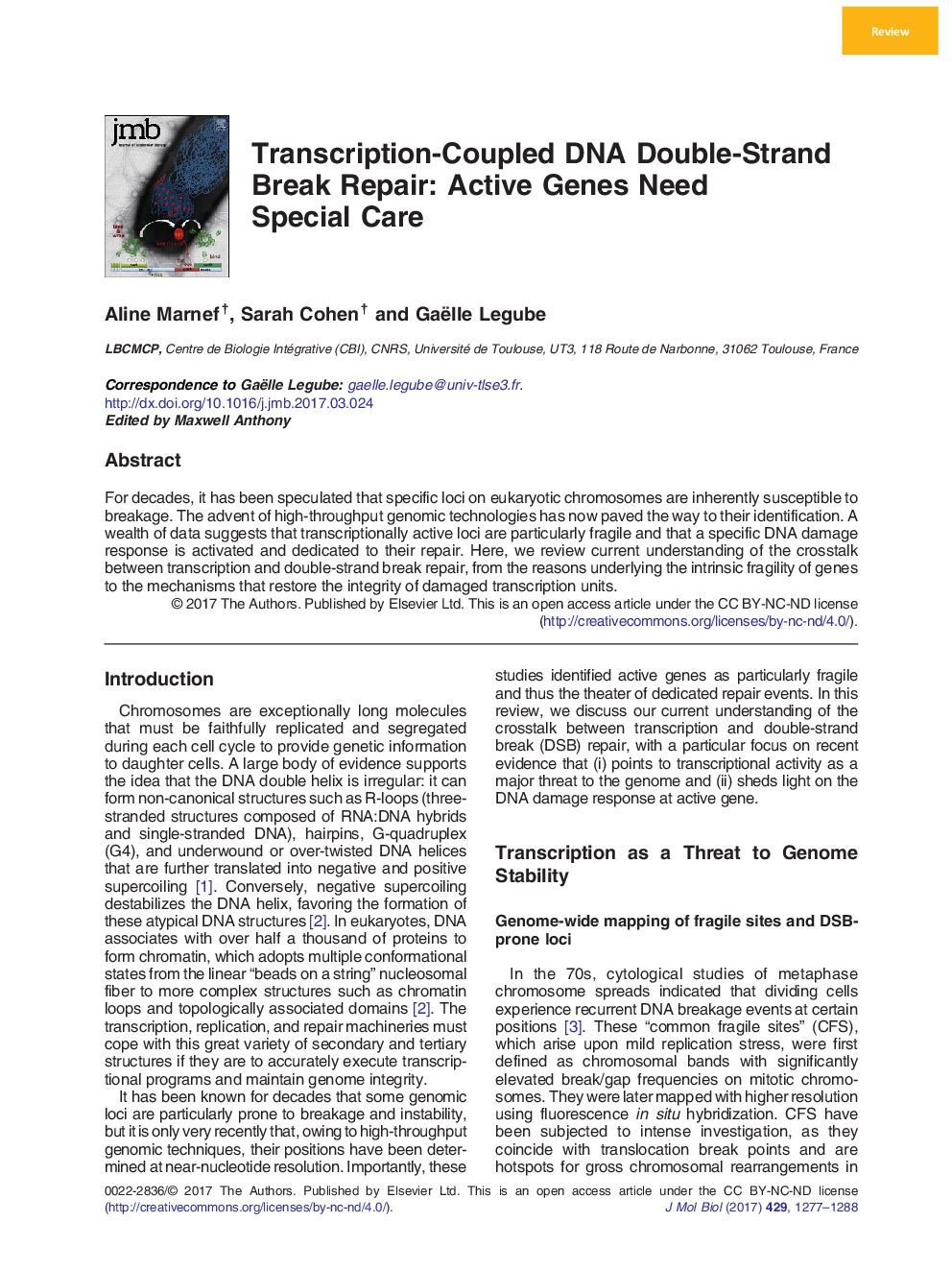| Article ID | Journal | Published Year | Pages | File Type |
|---|---|---|---|---|
| 5533244 | Journal of Molecular Biology | 2017 | 12 Pages |
â¢Novel sequencing-based methods revealed that active genes are particularly prone to breakage.â¢In G2, homologous recombination is favored at active genes.â¢Other less characterized pathways may ensure robust sequence recovery at active genes particularly in G1.â¢Transcription is subjected to a complex and dynamic regulation at damaged genes.
For decades, it has been speculated that specific loci on eukaryotic chromosomes are inherently susceptible to breakage. The advent of high-throughput genomic technologies has now paved the way to their identification. A wealth of data suggests that transcriptionally active loci are particularly fragile and that a specific DNA damage response is activated and dedicated to their repair. Here, we review current understanding of the crosstalk between transcription and double-strand break repair, from the reasons underlying the intrinsic fragility of genes to the mechanisms that restore the integrity of damaged transcription units.
Graphical AbstractDownload high-res image (159KB)Download full-size image
